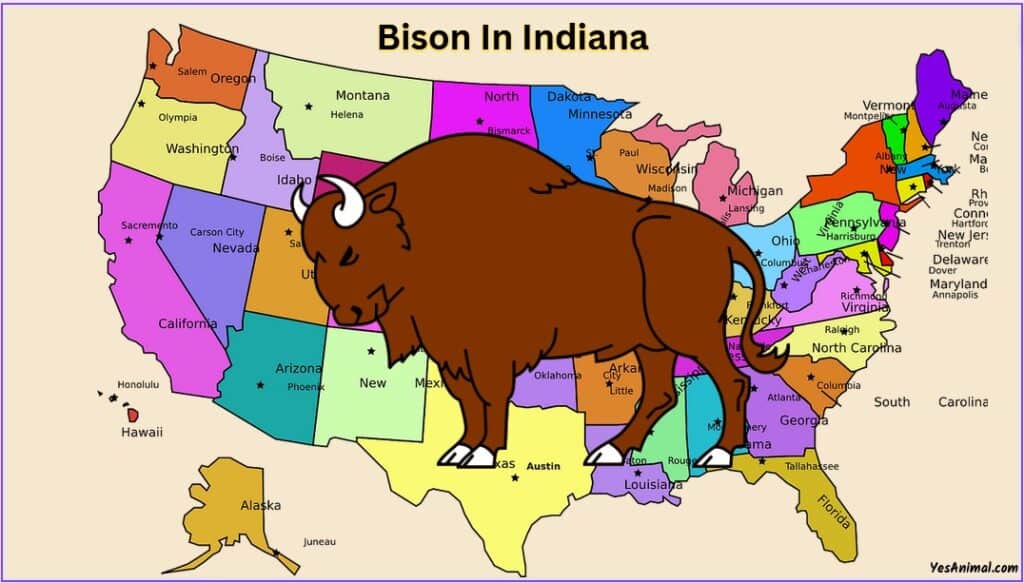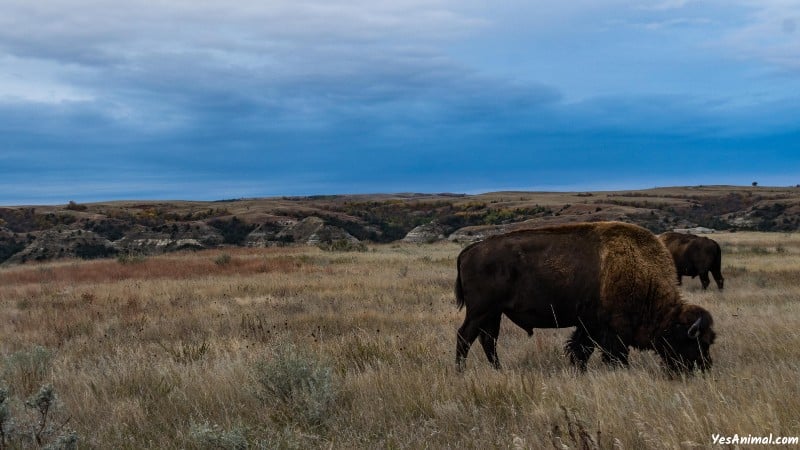Last Updated on September 14, 2023 by Amin Tawar

Indiana called the “Hoosier State,” is a component of the Great Lakes Area. The state has a mixed topography that includes grassland prairies, dense forests, riverbanks, rocky hills, and lakeshores which is home to a healthy wildlife population.
One of the wildlife populations in India is the American Bison. Today, let us discover the bison in Indiana, the reason for the extinction, and where you can spot one in the Indiana wild.
Are There Any Bison In Indiana?
Indiana’s bison herd is quite young. As part of an overall Nature Conservancy scheme of restoration, 23 bison were transferred to 1,000-plus acres of Kankakee Sands on October 2016. These bison in Indiana were born in South Dakota and just like many American bions have been moved to a new state looking for a better life.
Or that finding was done for these bison by conservationists. While certainly, the modernization of the state dates back considerably earlier than the European settling of the West, the population of bison did occupy the Midwestern geography. Early travelers and explorers have reported a few sightings of bison in Indiana during the 1600s and 1700s.
How Many Bison In Indiana?
As part of a restoration project in the year 2016, 23 American bison were moved to the Kankakee Sands in Northwest Indiana. The herd not only survived but thrived, nearly doubling in 2017. To this date, the herd is flourishing, with additional four calves born in 2021!
In 2017, bison gave birth to 10 calves, and additional 10 bison were obtained from South Dakota. Today, 92 or so bison are living in Indiana, a population number that is “a moving target,” depending on the counts made and the birth rate in regular roundups.
Where To See Bison In Indiana?

Of course, everybody wants to know: Where can see bison? The viewing adventure, too, has been an aspect of the Kankakee Sands planning. Tourists can see them safely and easily. A viewing spot has been designated just off Highway 41, which operates through the Kankakee Sands.
Its small height acts as a natural “platform” where bison can be spotted grazing on the prairie by the viewers. There is no “best” time to see bison as they are on a move around the pasture in the daytime. They might be more visible, a few times and are less visible.
The Kankakee Sands implies planning the stay for some hours. Begin at the viewing location and you may get a fine sighting. If not, then you can drive near the pasture. If still not able to spot it, then you can walk along the trail.
When Did Bison Go Extinct In Indiana?
Nature Conservancy study showed a lone bison was recognized around the Kankakee location in the year 1824, and it was killed, perhaps the start of its fate in the Hoosier State. Since then, bison were no longer in Indiana habitant by 1830.
For those who arrived in the West, upon the extensive herds of bison, extending across the horizon in countless groups but in calculations of millions, it was unbelievable to consider such a magnificent and strong species could disappear. The commercial motivation was powerful, and in the winter of 1872, and as a result, 1.5 million bison were moved eastward.
Overlapping with the national impulse for westward growth, of settlers moving families from the East across the Rocky Mountains, was the glory of the importance of bison cuts to businessmen. Worse for the bison, the negative direction of mass slaughter is directed to the near-extinct of bison in the U.S. By 1880, only 100 existed in the wild.
Also Check Our Guide On Bison In America
Can You Own/Raise A Bison In Indiana?
Yes, you can raise a bison in Indiana. In Indiana, bison can be kept as livestock for dairy breeding, bions meat, or for the resale market. But every bison must be tagged by the state government which will contain the animal’s official ID and official ID number.
Any animal that is brought into the state of Indiana, must follow bison testing requirements within 10 days of their state of source. Records of all movements, including, sales, purchases, barter, and lease agreements must be documented for 5 years.
Conclusion
And that was everything you need to know about the Bison In Indiana. I hope this article answered all your queries.
Thank You For Reading!
Our Source for This Guide